Ennio Chiggio (Naples 1938 - Padua 2020).
In 1957 he began to paint small clumps graphics informal working black ink on paper and tempera compositions with color fields surrounded by blacks on cardboard signs. At that time his interests change and develop rapidly, visiting exhibitions in Venice and Milan in private galleries and institutions such as the Palazzo Grassi and the Biennale, Triennale, or by reading magazines such as SeleArte, The Arts, and Art Today the first international publishers of art books published in Italy.
In 1958-59 he attended a group of young artists from Padua following free courses at the office of Prof. Travaglia, professor of contemporary art open to the latest trends and architecture. He joined the N Group of Padua in 1959 with Alberto Biasi, Manfredo Massironi, Edoardo Landi and Toni Costa. First is a large group of young people who try to follow the events and local artists in some way to attend several competitions for works of art in public procurement. These initial requirements, implying that even more substantial problems are progressively in the light, you specify the objectives and then later the group is narrowed to five elements is exceeded, the gestures informal formal compositions to adhere to a more structured way with a more constructivist marked attention to the psychology of form. These choices are stimulated by Massironi by Biasi and exhibitions organized in Padua with the workings of artists and meetings with Motus Castellani and Manzoni in Milan at Azimut.
Chiggio positively influenced by these visual structures began to operate on a sequential spaces and developing the repetitive component of the phenomenal art. Since the founding of the Group N up to 1964 Chiggio, highly motivated from working collectively, acting within the visual research group during the period of absence for military service, informed by Biasi and Costa on the activities of the group through an extensive correspondence .
his return to Padua, Chiggio always define more precisely the scope of operational building "objects" obtained by the folding and cutting boards blacks, such as perceptual material structure able to overcome the randomness of the painting informal setting. The activities within the group become more intense and spread the awareness of work-object capable of changing the learning and use according to the theories of artistic form, information and quantum mechanics at this time are critical in 'approach to understanding the readings of essays by John Dewey.
The group, around 1961, defines its own visual objects as "open work", as defined by Umberto Eco and with increasing precision, puts the statements of 'Programmed and Kinetic Art, in those years are specified with the help of art historians Giulio Carlo Argan and Umbro Apollonio the conditions of making collective. At that time the individual interests of Chiggio also open to issues of visual poetry, to the actual photo and experimental music that will be presented in the exhibition at the study Enne as three collections of poetry developed visual albumen photographic mural. This interest is shared by other members of the team, then led to the famous theme shows N-teaching at the studio, so necessary in terms of epistemological research, on which much effort was spent.
Chiggio considered very important , for his artistic training, information exchange with international artists feed into the new trends and the unique atmosphere of the meetings with the critical Matko Mestrovic in Padua and then to Zagreb. For the group exhibition at Studio F in Ulm, the N visit the Hochschule für Gestaltung and perceptual research group are considered so important for teaching visual communication school ulmiana that it was thought possible to open a permanent space for research there.
Between the years 1970 and '80 the collective work is diversified and Chiggio pursue their individual research through the transfer of its investigation into perceptual structures defined by alternating white-red field, able to modulate any surface scans through destabilizing the solid form received. These works are made with tempera on paper, screen prints on various media, dies on paper and kinetic structures. Chiggio In 1980 he had begun his teaching at the Academy in Venice in 1978, elaborates further their research in semiological around the set of Art, investigating the conduct of the historical avant-garde.
From 1964 to 1977, as a professional, he opened a design studio that operates in Italy and abroad in the areas of electromechanical, furniture, lighting, glasses and in the field of precast lightweight (SMAU for the clock control Solari). From 1975 to 1991 held the artistic director for Italian and foreign companies.
On March 18, 2011: the fiftieth anniversary of the historic event in which the Group N showed the world: "Arte è pane… pane è arte". On that occasion, Luigi Barzini jr., in a famous article published in the Corriere della Sera, June 18, 1961 entitled "Arte e salame" he wondered: to what the art will extent? Piero Manzoni, two months later, tributes to the Padua group with his "Achrome" of breads and kaolin, recently auctioned at Christie's in hundreds of thousands of euro.
The artists of the Group N (Alberto Biasi, Ennio Chiggio, Toni Costa, Edoardo Landi, Manfredo Massironi) were the undisputed protagonists of Programmed and Kinetic art.
In 2011 the exhibition in Florence at Santo Ficara gallery: "Ennio Ludovico Chiggio - Alternanze dinamiche" from 16/04 to 30/05/2011.
In Padua, from June 17 to July 17/2011, at the Cultural Center Altinate - St. Gaetano the exhibition: "Ennio L. Chiggio - Ricerche 1957-2011 Dislocamenti amodiali".
On 2012 the exhibition "Ennio L. Chiggio / Edoardo Landi - Enne Relatività Instabili - a partire dal Gruppo Enne - opere 1961-2011" at the Ricerca Art Gallery in Rome from 30/03 to 28/04.
On 2012 the exibition “Programmare l’arte. Olivetti e le Neoavanguardie cinetiche” at Olivetti shop in Piazza San Marco Venice from 30/08 to 14/10.
|
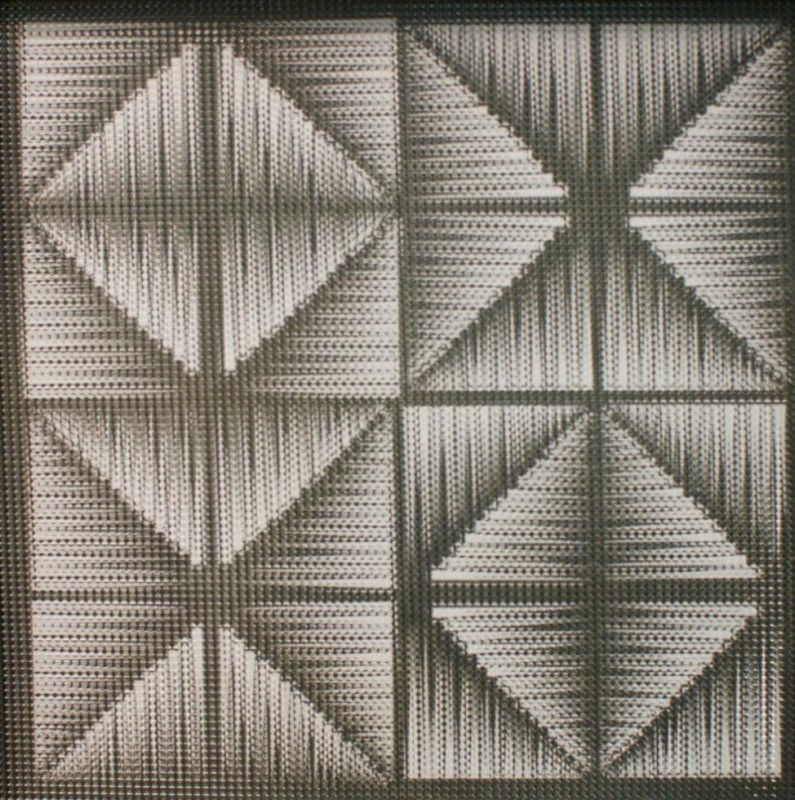
Ennio Chiggio 1968 | 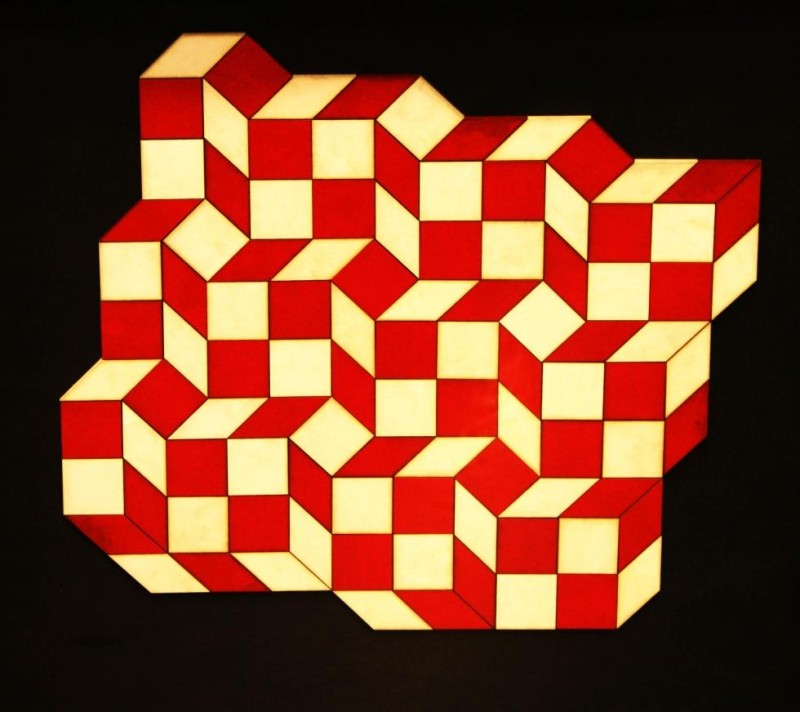
Ennio Chiggio 1973 | 
Ennio Chiggio, BR-Disposizione stellare, 1990 cm55x55x40 | 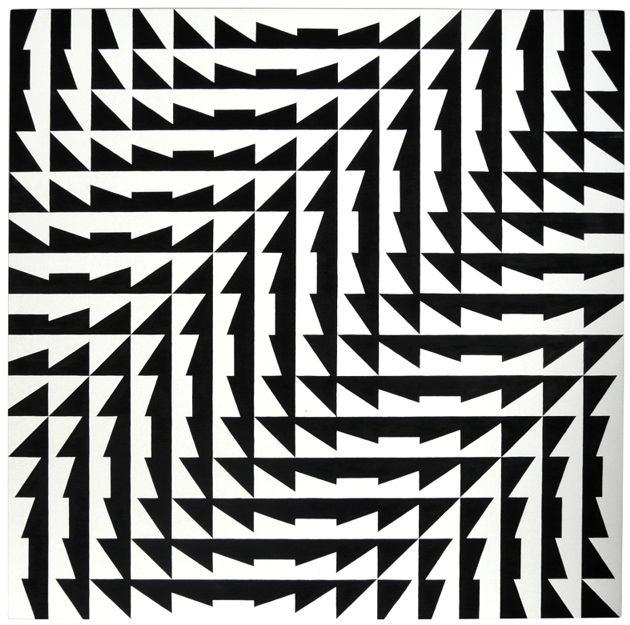
Ennio Ludovico Chiggio, DOP 1 programmata, 1964, acrilico su tavola, cm 100×100×2 | 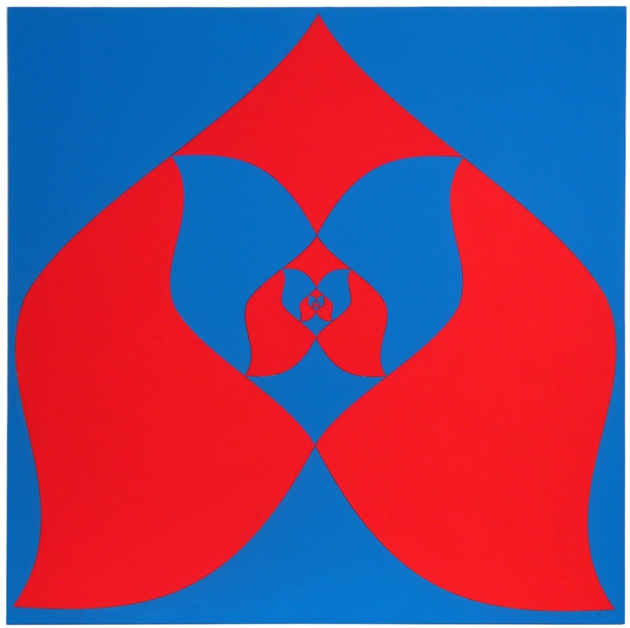
Ennio Ludovico Chiggio, Frattale Tulipano, 2008, telaio di legno rivestito di tessere di cartoncino dipinto acrilico, cm 80×80 | 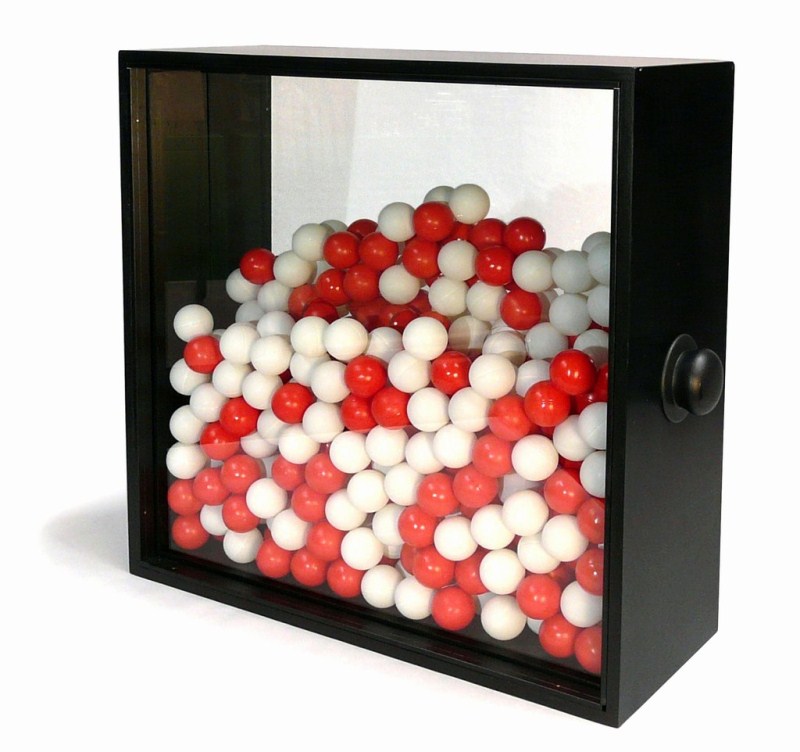
Ennio Chiggio Bispazio instabile, 1962, 50X50X15cm, sfere di celluloide bianche e rosse, vetri, contenitore di legno, Collezione privata. |
|


